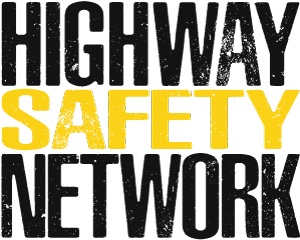
DTNH22-05-H-05011 “Tween Seat Belt Study: Avoiding Tween Tragedy” The NHTSA study “Increasing Safety Belt Usage Among 8 to 15-year-Old Motor Vehicle Occupants.” the HSN acted as prime and lead Principle Investigators and Project Manager.
“Evaluation of the Reading, PA Nighttime Safety Belt Enforcement Study” September 2004: The HSN led the project development and coordination to evaluate the impact on safety belt use of the nighttime safety belt enforcement program conducted in Reading, PA. The Reading Project created standard operating procedures for nighttime seat belt enforcement that have since been replicated nationally.
DTNH22-08-C-00141, “Law Enforcement Liaison” Served as a Lead Investigator for NHTSA’s Documenting the Effectiveness of Law Enforcement Liaison (LEL) Networks to Enhance Enforcement and Regional Data Analysis.
DTNH22-10-D-00135, “Evaluating Combined Occupant Protection and Speed Mini-Grants”— Led project site coordination, enforcement and communication activities. This project evaluated various types of non-traditional seat belt enforcement programs in small law enforcement agencies.
DTNH22-09-D-00135, “Minimizing Suburban Unrestrained Fatalities”— Lead Investigator to develop SB enforcement strategies with the law enforcement agencies in Cranston and Warwick, Rhode Island and Will County, Illinois. Both 10-D-00135 and 09-D-00135 studies have been completed and await NHTSA publication.
DTNH22-14-C-00403, “Evaluation of Innovative and Sustainable Seat Belt Enforcement”—Lead PI for all enforcement activity reporting along with crash and citation data collection activities associated with the intervention and control sites.
DTNH22-15-C-00015, “Enforcement Technical Assistance to Increase Seat Belt Use: Lessons Learned Seat Belt Use” The project is working directly with 6 Law Enforcement Agencies and their community to support seat belt enforcement, increase seat belt use and decrease unrestrained occupant fatalities (in state communities with lower than average seat belt use rates and higher than average unrestrained fatalities). The HSN staff secured LEAs, coordinated enforcement and communication activities.
DDTNH22-15-C-00024, “Building Community Support for Seat Belt Enforcement”. This project worked directly with a Law Enforcement Agency and their community to support seat belt enforcement, increase seat belt use and decrease unrestrained occupant fatalities in communities with lower than average seat belt use rates and higher than average unrestrained fatalities. The Data Driven Approaches to Crime and Traffic Safety (DDACTS) model was utilized to identify community issues and implemented by the Norman, Oklahoma Police Department. The HSN staff secured the host LEA and coordinated enforcement and communication activities.
A pilot rollcall DDACTS training was developed and implemented in cooperation with the Weatherford Texas Police Department.
DTNH22-15-R-00008, “Evaluation of Community-Oriented Enforcement Demonstrations”: The HSN was tasked to collect relevant law enforcement and community activity data and assist with the cost effectiveness analysis for Building Community Support for Seat Belt and Impaired Driving Enforcement Projects.
DTNH22-16-R-00043,“Documenting the Effectiveness of Law Enforcement Liaison Networks to Enhance Enforcement” The HSN is providing expert consultation, web design and software development to create a national survey model. Staff also will serve as interviewer in the surveys of state case studies for this project.
PennDOT – “Judicial Outreach Liaison Project” The HSN managed a contract with the Pennsylvania Department of Transportation that provided funding for the State’s Judicial Outreach Liaison Project (JOL) from 2015-2017.
PA Certified Seat Belt Surveys: BUPA coordinates and implements the Pennsylvania’s certified observational seat belt plan since 2001. The current plan, created in 2017, is based on the National Highway Traffic Safety Administration 23 CFR Part 1340 Uniform Criteria for State Observational Surveys of Seat Belt Use (Federal Register /Vol. 76, No. 63 / Friday, April 1, 2011 /Rules and Regulations) guidelines. The HSN provides survey schedules and secures observers, provides observer trainings, quality assurance, collects and provides the state with survey data.
Relevant Publications
Decina, L.E., Alonge, M.A., Alonge, C., Drobnick, A., & Mastromatto, T. (in publication). Evaluating Combined Occupant Protection and Speed Mini-Grants, International Association of the Chiefs of Police (IACP) in Arkansas and Rhode Island. USDOT/NHTSA Contract No. DTNH22-09-D-00135.
Decina, L.E., Alonge, M.A., Alonge, C., Drobnick, A., & Mastromatto, T. (in publication). Evaluating Combined Occupant Protection and Speed Mini-Grants, National Sheriffs’ Association (NSA) in Arkansas, Kentucky, and Wisconsin. USDOT/NHTSA Contract No. DTNH22-09-D-00135
Alonge, M., Alonge, C., O’Donnell, Harnish, A., Matz, M., and Decina, L. (2012) “Demonstration Project to Increase Seat Belt Use Among 8 to 15-year-Old Motor Vehicle Occupants.” USDOT/NHTSA, Washington, D.C.
Chaudhary, N., Alonge, M., and Preusser, D. (2005). “Evaluation of the Reading, PA nighttime safety belt enforcement campaign: September 2004,” Journal of Safety Research, 36(4).
